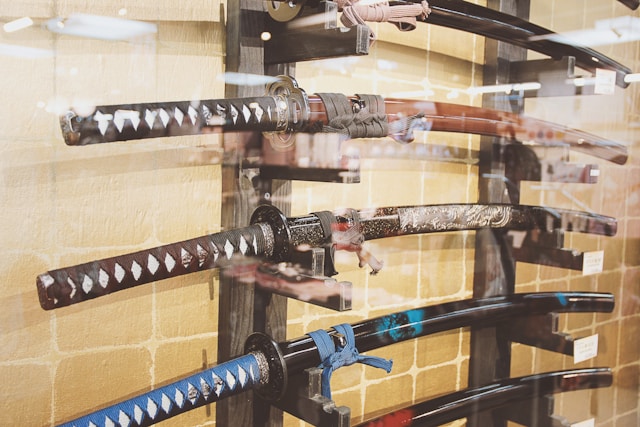
Things You Can Do with the Katana Sword
The katana, which is a symbol of Japanese culture and workmanship, serves as more than just a weapon. From martial arts instruction to collecting, this renowned sword provides a variety of enjoyable activities. If you want to get your first Katana sword, it is important you know what you can use it for. This article examines the katana’s applications in martial arts, cutting practice, collecting, and cultural relevance, highlighting its mythical position.
Cultural and Historical Exploration
In Japanese history, the katana is deeply culturally significant. It was the samurai’s main weapon, representing honor, loyalty, and martial ability. Knowing the katana’s position in samurai culture sheds light on feudal Japanese beliefs and traditions.
Craftsmanship
Making a katana is a highly skilled and sophisticated procedure that has been perfected over generations. The blade is composed of steel, which is repeatedly folded and pounded to form a strong, flexible tamahagane katana. This traditional process mixed with contemporary methods yields katanas that are elegant and useful.
Martial Arts Training
Iaido is a martial technique that involves drawing and cutting with a katana. Iaidoka practitioners use deliberate, fluid motions that highlight awareness, composure, and accuracy. The idea is to draw the sword, hit an opponent, and then effortlessly retract the blade. This practice promotes mental balance and calmness.
Kendo
“The way of the sword,” or kendo, is a contemporary Japanese martial art practiced with bamboo swords and protective equipment. It blends conventional practices with competitive components, focusing on speed, technique, and mental discipline. Kendo practitioners participate in full-contact sparring, which promotes both physical and mental toughness.
Cutting Practice
Traditional katana training targets include tatami mats and bamboo. Tatami mats replicate a human body’s resistance, but bamboo represents bone density. Both objectives assist practitioners in improving their cutting skills and edge alignment.
Modern Substitutes
Traditional cutting targets have been replaced by water-filled plastic bottles, wet newspaper rolls, and suspended paper. These objects are cheap and generally available, making them ideal options for practice. For example, water-filled bottles provide minimal resistance while providing instant feedback on technique and precision.
Artistic and Creative Uses
Katanas are usually used in visual media to convey concepts of honor, heritage, and martial ability. They appear significantly in films, photography projects, and even computer games, bringing truth and dramatic rise to creative creations.
Writing and Storytelling
The katana is a potent emblem in literature and narrative. Authors may explore themes of bravery, selflessness, and the warrior’s code by using katanas in their works. It adds rich cultural history to stories, whether they are historical or modern.
Collecting and Displaying
Katanas are beautiful and have historical value, which makes them a popular collectible. Displaying a katana may be a spectacular statement item, demonstrating a strong admiration for Japanese culture and craftsmanship. Every katana is unique and visually attractive because of the fine features of the blade, handle, and scabbard.
Investment Value
A real katana, the famous curved sword, can be valuable for collectors, especially those with historical value. Katana collectors frequently look for swords with distinctive characteristics, including a noticeable hamon (temper line) or a well-known maker’s signature. To ensure a katana’s worth and authenticity, purchasing one requires thorough investigation and authentication.





